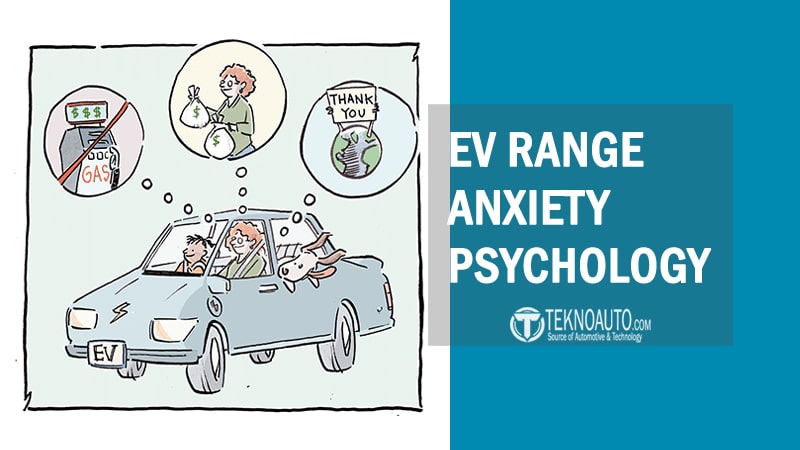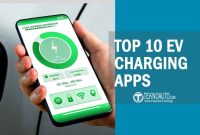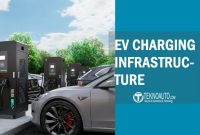EV range anxiety is often described as the fear of running out of battery power before reaching a charging station. While it’s easy to blame the technology—battery limitations, charging networks, or infrastructure gaps—the truth is that much of this anxiety lives not in the car, but in the driver’s mind.
Picture this: a new EV driver watches their range drop from 80% to 25% during a long trip. Despite having more than enough charge to reach their destination, their grip tightens on the steering wheel. They start looking nervously for a charging station—just in case. This kind of stress isn’t unusual. In fact, it’s more common than most automakers anticipated.
As more drivers switch to electric vehicles, range anxiety has become a psychological hurdle, not just a technical one. Fear of the unknown, lack of experience, and misinformation all contribute to a perception that EVs are riskier to drive over long distances—even when the data proves otherwise. This article explores how mindset, habits, and outdated assumptions fuel range anxiety—and how you can train your brain to overcome it.
Understanding the Psychology Behind EV Range Anxiety
Why the Fear of Running Out Is More Mental Than Mechanical
The human brain is hardwired to react strongly to uncertainty. When you’re unsure whether your EV will get you to your destination, even with plenty of range left, your brain may treat that situation like a threat. This anticipatory anxiety kicks in before any real danger occurs, and it feeds into worst-case thinking: What if I get stranded? What if there’s no charger available?
This fear response often overrides rational thinking. In reality, most EVs today offer ranges that comfortably cover the majority of daily driving needs. But the stress of watching the range meter drop—similar to how some people obsess over their phone’s battery percentage—triggers a sense of loss of control, which can feel paralyzing.
The Role of Experience and Conditioning
Much of this anxiety is shaped by years of driving gasoline-powered cars. Traditional drivers rarely worry about fuel because gas stations are everywhere, and refueling is familiar and fast. This decades-long conditioning builds a strong psychological safety net.
Switching to an EV disrupts that. New drivers suddenly have to think about charging networks, range estimates, and consumption rates. Without a mental framework for what “safe” battery levels look like, even 40% battery can feel dangerously low—especially when compared to a gas gauge that doesn’t usually spark fear until it’s nearly empty.
This adjustment phase is critical. Drivers who lack EV experience are more likely to overestimate the risk of running out of charge. Their anxiety is less about actual range and more about perceived vulnerability.
Common Misconceptions That Worsen EV Range Anxiety

Myth #1: You’ll Constantly Be Searching for Chargers
One of the most common assumptions fueling EV range anxiety is the belief that charging stations are scarce and hard to find. This misconception stems from early EV days when EV charging infrastructure was still developing. Today, the situation has improved dramatically, especially in urban areas and along major highways.
In 2025, most EV drivers in developed regions are rarely more than a few kilometers away from a public charging point. What’s more, the rise of EV charging apps and in-vehicle navigation systems means drivers can locate and plan their next charge with ease. Still, many new users imagine worst-case scenarios where they’re stranded with no options nearby—a fear rooted more in outdated perception than reality.
If this concern lingers, the solution is simple: familiarize yourself with charging networks before long trips. Apps like PlugShare, ChargePoint, and A Better Routeplanner not only show real-time availability but also suggest optimal routes based on your current battery level. (Related article: Top 10 EV Charging Apps to Eliminate Range Anxiety While Driving)
Myth #2: EV Range Isn’t Enough for Daily Life
Many drivers assume EVs can’t handle regular commutes, errands, or spontaneous plans without needing a recharge. This idea persists even though data shows otherwise. In fact, studies in 2025 indicate that over 90% of daily car trips are under 50 miles (80 km)—well within the range of virtually every modern EV.
The real issue isn’t range—it’s the perceived inconvenience of monitoring battery status. With gasoline vehicles, drivers trust their instincts and experience. But with EVs, every kilometer is tracked digitally, making users hyper-aware of consumption. This over-monitoring creates a feedback loop of anxiety, despite the fact that the car can easily handle most daily routines.
If you’re still unsure, try logging your weekly driving distance and compare it to your EV’s range. You’ll likely find that your car is capable of much more than you expect. (Related article: EV Range Anxiety vs Real-World Driving: What the Data Really Says in 2025)
Myth #3: Cold Weather = Dead Battery
Yes, EV batteries are affected by extreme cold—but not as drastically as some headlines suggest. Cold temperatures can temporarily reduce battery efficiency and limit regenerative braking, but they don’t make EVs undriveable. Most modern models now include thermal battery management systems designed to handle sub-zero conditions efficiently.
The real problem is perception. New EV drivers unfamiliar with winter effects often see reduced range and assume the battery is failing. In truth, this drop is predictable and manageable. With simple adaptations—like pre-conditioning the battery or using seat heaters instead of cabin heat—drivers can minimize impact without compromising comfort or range.
Understanding how EVs behave in various climates is key to replacing fear with strategy. As with all range-related concerns, experience builds confidence.
How Driving Habits Influence EV Range Perception

Aggressive Driving and Constant Monitoring Make It Worse
Driving habits play a critical role in shaping how EV range anxiety is experienced. While aggressive acceleration, high speeds, and frequent braking can objectively reduce range, the perception of losing range too quickly often intensifies anxiety more than the actual numbers justify.
Interestingly, some EV drivers develop a habit of watching their range meter obsessively, almost like checking a heartbeat monitor. This constant tracking heightens stress—especially when the range dips faster than expected. The irony is that this behavior leads to inefficient driving patterns, such as panic slowing, sudden charging detours, or avoiding safe detours out of irrational fear.
In contrast, experienced EV users often learn to drive more mindfully—not out of necessity, but because smoother driving actually becomes more satisfying and efficient. Once drivers stop focusing on the range meter and start trusting their vehicle’s capabilities, anxiety tends to decrease significantly.
Range Anxiety Is Contagious: Social Influence and Online Forums
Many new EV owners turn to online communities or forums for advice, which is both a blessing and a curse. While some platforms offer practical solutions and troubleshooting tips, others inadvertently spread fear by overemphasizing edge cases or worst-case experiences. Stories like “I got stranded in the middle of nowhere” can stick in the mind more than dozens of positive reviews.
This effect is known as negativity bias—our tendency to remember and prioritize bad news over good. For EV drivers, it means that even reading about someone else’s stressful experience can make them feel more anxious, even if they’ve never faced the issue themselves.
Moreover, viral videos or social media rants about EV battery anxiety often lack context. A video showing someone panicking with 5% battery remaining may ignore the fact that a charger was nearby or that the person ignored several charging opportunities earlier in the trip.
Ultimately, it’s important to filter community feedback wisely. Instead of focusing on fear-driven anecdotes, look for long-term user reports, driving logs, and real-world range tests. Confidence comes not from other people’s experiences, but from your own growing familiarity with the vehicle.
From Anxiety to Confidence: Cognitive Shifts That Help
Reframing the “What Ifs”
One of the most powerful tools for overcoming EV range anxiety is reframing the mental “what if” scenarios that dominate a worried driver’s thoughts. Instead of asking, “What if I run out of battery?”, experienced EV users shift the question to, “How far can I still go safely before needing to charge?”
This subtle shift may seem small, but it transforms the mindset from fear to planning. In psychology, this technique is part of cognitive behavioral strategies that help rewire anxious patterns. By focusing on controllable variables—like current location, estimated range, and nearest charging points—drivers regain a sense of agency. Fear fades when replaced with logic and preparation.
Another useful approach is to reframe range data not as a countdown, but as a flexible buffer. For example, if your EV shows 30% battery, instead of seeing it as “almost empty,” see it as “enough for another 60 km”—which, for most drivers, is more than adequate for urban driving.
Building Familiarity and Charging Routines
Just like any new habit, driving an EV confidently takes repetition. The first few weeks may feel overwhelming—monitoring range, learning to use apps, planning routes—but with regular use, familiarity builds trust. That trust gradually replaces anxiety.
One of the fastest ways to reduce stress is to establish a charging routine. Charging overnight at home or consistently using the same public stations on your commute eliminates surprises and builds comfort. Think of it like getting used to your phone’s battery life—you learn how long it lasts, when it typically drops, and how to plan around it.
Over time, this routine becomes second nature. What once felt like a burden—checking range or planning charging stops—becomes part of your driving rhythm. And with each trip completed smoothly, your brain starts replacing fear-based assumptions with real-world proof that your EV is reliable.
This is where many EV drivers report a clear turning point: the moment when driving an electric vehicle no longer feels like an experiment—but like freedom.
Mental vs Technical Factors of EV Range Anxiety
To fully understand and manage EV range anxiety, it’s essential to distinguish between what’s happening in the mind versus what’s happening in the machine. While technical limitations do play a role, psychological and behavioral patterns often amplify the issue far beyond reality.
Here’s a breakdown of mental and technical factors—and what drivers can actually control:
Table: Comparing Mental and Technical Contributors to EV Range Anxiety
| Factor Type | Description | Real-World Impact | Can It Be Controlled? |
|---|---|---|---|
| Psychological | Fear of running out, uncertainty, lack of trust in battery | Heightened stress, unnecessary early charging | Yes |
| Behavioral | Constant range checking, inefficient driving habits | Lower real-world range, increased anxiety | Yes |
| Social Influence | Online stories, community fear-mongering | Negative perception of EVs | Yes |
| Technical | Battery capacity, infrastructure availability | Actual range limitations, access to chargers | Partially |
| Environmental | Cold weather, terrain, and climate | Reduced efficiency in extreme conditions | Partially |
The takeaway? Most drivers have far more control over range anxiety than they realize. By adjusting habits and mindset, you can reduce stress even when technical limitations remain.
How to Train Your Brain to Beat Range Anxiety for Good

Start Local, Build Confidence Gradually
The most effective way to overcome EV range anxiety is not by memorizing specs or reading manuals—it’s by creating real-world experiences that counter fear with familiarity. Start small. Take short trips close to home, log your usage, and monitor how much battery you actually consume. You’ll likely find that your EV performs better than expected, especially during daily routines.
This practice builds range intuition, helping your brain understand what different battery percentages actually mean in real-life kilometers. Over time, what once felt uncertain becomes predictable—and predictability is the enemy of anxiety.
Once you’re comfortable locally, slowly increase trip distances and incorporate occasional public charging stops, even if unnecessary. This helps normalize the process and prepares you mentally for longer trips.
Practice the “Battery Buffer” Mindset
One of the best cognitive tools for easing EV range concerns is the battery buffer mindset—treating 20% charge not as “low,” but as your mental reserve. Much like drivers of gasoline vehicles feel confident with a quarter tank left, EV drivers can train themselves to view 20–25% battery as completely safe and usable.
This reframing removes panic from the equation. Instead of rushing to charge at 50% “just in case,” you develop trust that your EV has more than enough buffer to finish your trip, find a station, or wait until later.
Over time, this mindset makes driving more relaxed, less data-driven, and more instinctive—similar to the transition drivers made when smartphones first normalized battery percentages.
Log Your Experience to Build Trust in the Tech
Another practical way to train your mind is by tracking your trips—distance traveled, percentage used, and available chargers. Keeping a personal log (via apps or simple notes) transforms your experience into concrete, reassuring data.
For example, if you notice that your typical 40 km commute only consumes 18% battery even with air conditioning, you’ll start trusting that 50% charge is more than enough for any unplanned detour.
This act of self-monitoring flips the anxiety cycle on its head. Instead of reacting emotionally to range numbers, you begin responding logically—because you’ve seen firsthand what your car is capable of.
Conclusion: EV Range Anxiety Starts in the Mind—But So Does the Solution
EV range anxiety may appear to be a technical issue on the surface, but in reality, it’s often a psychological response rooted in unfamiliarity, habit, and outdated assumptions. While early EV technology may have justified some of these fears, modern electric vehicles—backed by longer ranges, smarter software, and expanding charging networks—have rendered many of those concerns obsolete.
The real challenge now is rewiring how we think about range. By addressing misconceptions, building new driving habits, and reframing anxious thought patterns, EV drivers can shift from stress to confidence. It’s not about eliminating fear altogether—it’s about replacing it with experience, logic, and trust in the system.
Every trip completed without incident is a vote of confidence. Every smooth recharge, every uneventful commute, and every kilometer driven without anxiety helps rewrite the mental script. And over time, drivers begin to see what EV advocates have known for years: the car isn’t the problem—our mindset is.
To go fully electric is not just to change how you power your vehicle, but how you relate to the road—and to your own sense of control.
FAQ: EV Range Anxiety
What is EV range anxiety and why does it feel so intense?
EV range anxiety is the fear of running out of battery in an electric vehicle. It feels intense because it triggers uncertainty, loss of control, and fear of being stranded—psychological responses often stronger than the actual technical risk.
Is EV range anxiety more psychological than technical?
Yes. While battery limitations exist, most EVs today offer ample range for daily needs. The anxiety often stems from unfamiliarity, perceived risk, and habits from driving gasoline vehicles.
How can I mentally overcome range anxiety in my EV?
Start with short, familiar trips and track battery usage. Build routines, use reliable charging apps, and reframe how you interpret range data. Over time, experience will reduce fear.
Does aggressive driving make EV range anxiety worse?
Yes. Fast acceleration, hard braking, and constantly monitoring your range can lead to inefficient driving and heightened stress. Smooth driving helps conserve range and calm the mind.
Can EV charging apps help reduce psychological range anxiety?
Absolutely. Apps like PlugShare or A Better Routeplanner provide real-time charger locations and range estimates, which reduce uncertainty and give drivers more control and confidence.




